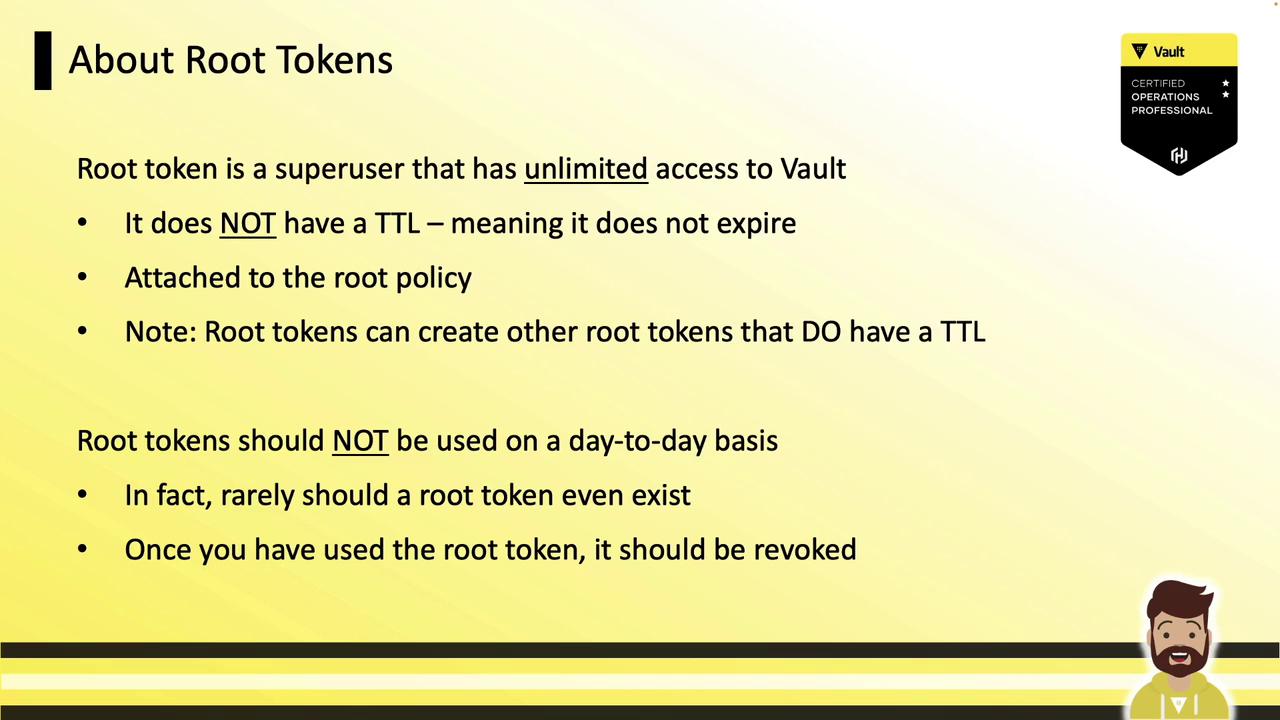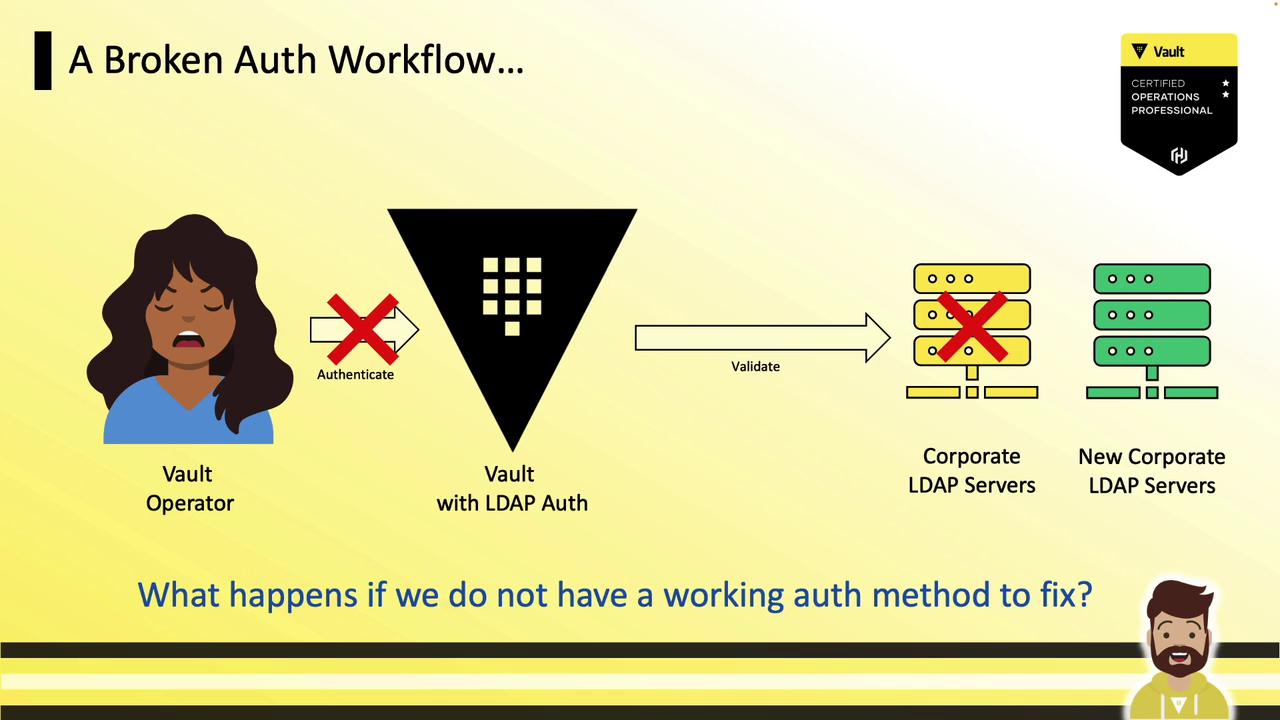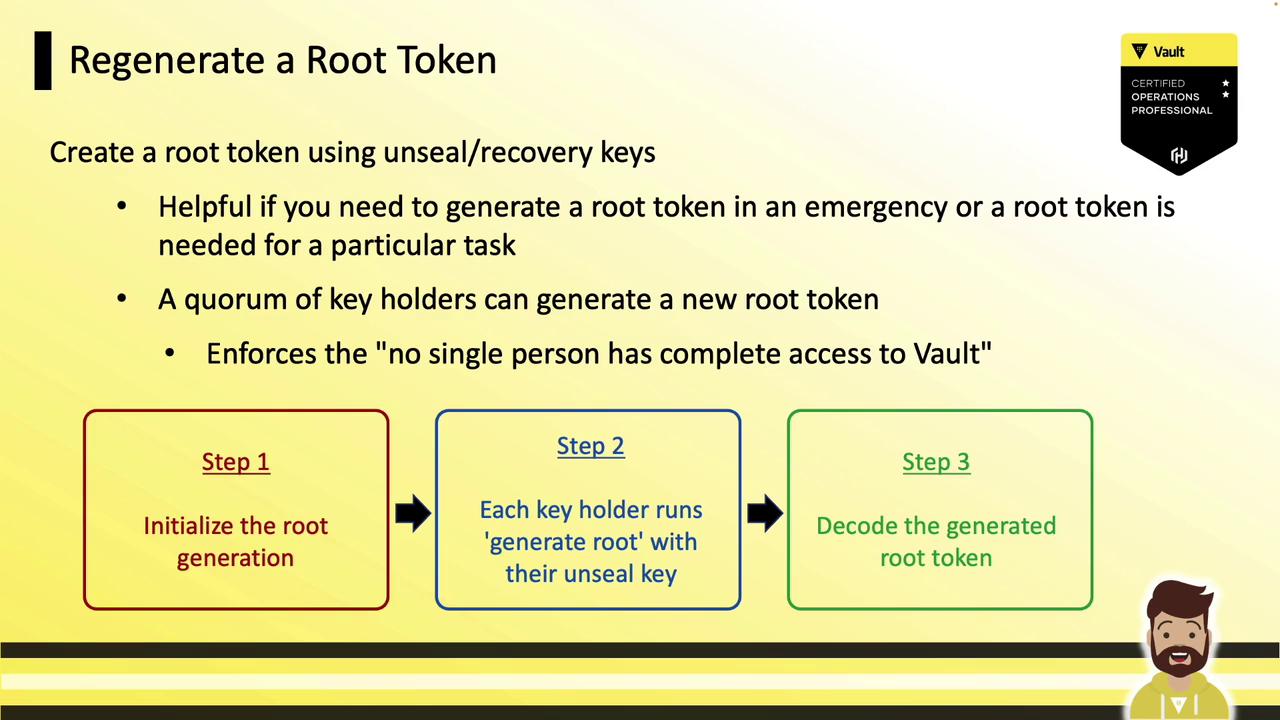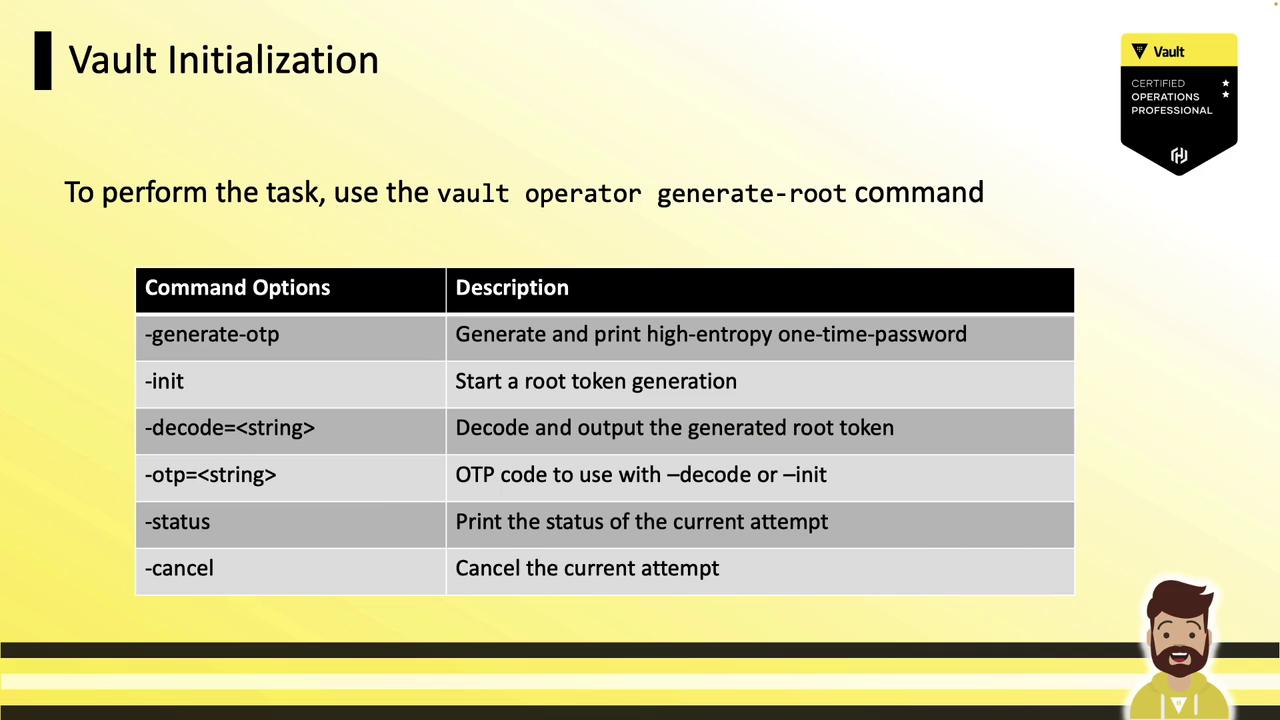HashiCorp Certified: Vault Operations Professional 2022
Create a working Vault server configuration given a scenario
Regenerating a Root Token
When standard authentication methods fail, regenerating a root token grants temporary superuser access. In this guide, you’ll learn what a root token is, how to revoke the initial token, and step-by-step instructions for generating a new one using unseal (recovery) keys.
What Is a Root Token?
A root token is Vault’s superuser credential. It’s bound to the built-in root policy—which cannot be modified or deleted—and grants unrestricted access across your Vault cluster.

Key characteristics:
| Characteristic | Description |
|---|---|
| No TTL | Never expires; valid indefinitely |
| Usage scope | Only for initial setup or critical emergencies |
| Immediate revocation needed | Revoke the root token as soon as tasks are complete |
| Immutable | Cannot be altered or deleted |
Initial Root Token and Revocation
Immediately after initializing Vault, your only authentication method is the initial root token. Once you enable and configure other auth backends (e.g., LDAP, AppRole, Kubernetes) and create policies, revoke this token to minimize risk:
vault token revoke s.dhtIk8VsE3Mj61PuGP3ZfFrg
# Success! Revoked token (if it existed)
Note
The token prefix (s. or hvs.) varies by Vault version.
Emergency Scenario: Broken Authentication
Imagine Vault uses corporate LDAP for operator logins:
- Operator logs in via LDAP
- Vault validates credentials against the LDAP server
- A network change or firewall misconfiguration breaks LDAP connectivity

Without a valid auth method or a root token, you cannot update the LDAP backend. In such emergencies, you can regenerate a root token by leveraging your unseal (recovery) keys—ensuring no single individual can generate it alone.
Regenerating a Root Token
Root token regeneration follows the same quorum-based approach as Vault unsealing. You’ll:
- Initialize the generation process.
- Have each key holder submit their unseal key.
- Decode the new root token with the one-time password (OTP).

Command Options
Below are the primary flags for vault operator generate-root:

| Flag | Description |
|---|---|
-init | Start root generation; outputs a nonce and OTP. |
-status | View progress (Progress X/Y). |
-cancel | Abort the generation operation. |
-otp | Supply the one-time password when decoding the token. |
-decode | Provide the encoded token string for decoding. |
Step 1: Initialize Root Generation
Kick off the process to obtain a Nonce and OTP:
vault operator generate-root -init
A One-Time-Password has been generated for you and is shown in the OTP field.
Keep this OTP secure; it’s required to decode the new root token.
Nonce 5b6e3831-2a45-4695-7757-5810074d36c8
Started true
Progress 0/3
Complete false
OTP E87jF6ZeJo8NjWvytl7mvKLEr
OTP Length 26
- Nonce: Share with key holders.
- OTP: Confidential; do not expose.
- Progress: Tracks submissions (e.g., 0/3 keys submitted).
Warning
Guard the OTP carefully. Anyone with the OTP and the final encoded token can reconstruct the root token.
Step 2: Key Holders Submit Unseal Keys
Each key holder runs the command (no flags):
vault operator generate-root
Root generation operation nonce: 5b6e3831-2a45-4695-7757-5810074d36c8
Unseal Key (hidden input):
Nonce 5b6e3831-2a45-4695-7757-5810074d36c8
Started true
Progress 1/3
Complete false
Repeat until the threshold is reached. After the final key:
vault operator generate-root
Nonce 5b6e3831-2a45-4695-7757-5810074d36c8
Started true
Progress 3/3
Complete true
Encoded Token G2NeKUZgXTsYYxILAC9ZFBguPw9ZBovFAs
Step 3: Decode the Root Token
Use the OTP and the encoded token to reveal the new root token:
vault operator generate-root \
-otp="E87jF6ZeJo8NjWvytl7mvKLEr" \
-decode="G2NeKUZgXTsYYxILAC9ZFBguPw9ZBovFAs"
Root token: hvs.gXtT3uq9teYf0ZnFQH6hOiw8
Authenticate and then revoke promptly:
vault login hvs.gXtT3uq9teYf0ZnFQH6hOiw8
vault token revoke hvs.gXtT3uq9teYf0ZnFQH6hOiw8
# Success! Revoked token (if it existed)
Best Practices
- Always revoke root tokens immediately after use.
- Limit the number of key holders and enforce MFA for key storage.
- Rotate recovery keys and OTP lifetimes regularly.
References
Watch Video
Watch video content